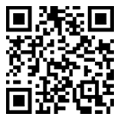Si Yu
By Robert Atkins
Si Yu was born in 1968 in the province of Henan and the city of Luoyang, the ancient Zhou dynasty capital and site of the first Buddhist temple in China. Although he was “very interested [in] and influenced” by the traditional culture and rich archaeological heritage of Henan—it is often termed the “cradle” of Chinese civilization--he studied industrial design, a decidedly more modern discipline, at Beijing’s China Institute of Applied Art. He went on to work as a graphic designer: first in China, then Hong Kong and, in 1996, New Zealand. While this last move inspired a turn to painting, his early landscape works were rendered in what he calls a “realist” style that bears little resemblance to the paintings for which he has become known in Shanghai, where he now lives.
Si Yu was a late bloomer, already in his mid-30s, when contemporary Chinese art commanded his attention. He was first drawn, around 2004, to Political Pop art with its social content and comment, and its up-to-date advertising- and propaganda-derived look. His mature style—featured in many exhibitions since 2007, making him a forty-ish “emerging artist”—is instantly recognizable from its subject matter of numbers and its coolly elegant, steely gray palette. Rows of closely spaced numbers, sometimes seen in reverse as if in a mirror, form a flat, rectangular, silvery field of dark gray numbers set against similarly colored, slightly lighter backdrops, which extend beyond the numbers as a framing device. (His sometimes vertical, rectangle-within-a-rectangle compositions are sometimes reminiscent of Mark Rothko.) As in computer graphics, the works are “spotlit,” making some numbers more brightly lit than others, or some seen glowing, as if backlit.
Si believes that numbers, whether utilized in computer code or genetic sequencing, are the essential key to our age, which he terms, the “numbering era.” He employs them as the ultimate representation of the man-made, the industrial and the non-natural. His medium size canvases (averaging around 4’ x 6’) typically lack a single number, among their long, otherwise regular rows of figures. These glitches in his compositions “symbolize,” he says, a genetic flaw, an imperfection or a disturbance that causes serious consequences in the social realms of ethics or law, the place where interpersonal conduct becomes publicly codified. “Can we find these missing [numbers],” he muses. “And amend these social conditions?”
Occasionally Si creates works that appear to depart from his usual emotionally distanced and enigmatic compositions, such as #26 and #51 from the series of more than 60 paintings that he has completely since 2006. Although they each contain numbers, they are very different from the majority of his works and from each other: #26 is a mysterious two-part composition that seems to represent an explosion or eruption atop a nearly empty, light-gray field, while #51, a hotly colored red painting with a gigantic X across it, marks what Si calls a “turning point” in his output. Since completing it, he has painted numbers only in mirror-like reverse, also symbolizing, he says, negation. In Chinese, this series was original named yuan daima, or “IP language for original code,” he explains. “But to me it indicates [extremity or] social destruction.” For viewers, it is an indication of change in the probing work of an artist with a distinctly philosophical bent.
斯宇(焦振予),1968年生于河南省洛阳市,这个曾是周朝首府和中国第一个佛教遗址的地方。这里有着悠久而丰富的历史遗产,也常被誉为华夏文明的摇篮。这些古老的文化积淀无不影响着他的成长。然而,他却选择了前往北京中央工艺美术学院学习工业设计。毕业后,他分别在国内、香港和新西兰(1996年)担任过平面设计师。尽管最终他走上了绘画的道路,早期的经历仍然带给了他的作品浓郁的“现实主义”风格,这些年他的绘画作品渐渐在他的第二故乡上海被人熟知。
大器晚成的他直到三十五岁左右才对当代中国艺术进行关注。2004年,他首先投入对政治波普艺术的研究,研究其社会背景和社会评价,以及源于最流行广告宣传的图形。他的成熟风格体现在2007年以来在很多展览会上,作品以数字为主要元素、冷酷高雅、使用钢铁般的灰色调,立刻得到赏识,使他在四十岁成了出名的艺术家。紧密排列的数字, 或成镜像对称,构成平面矩形,大片的银色和深灰色的数字映衬在颜色相似但稍浅的背景上,背景如同帧位调整装置超越数字而无限延伸。(他的作品有时,让人不禁联想到美国画家马克罗思科。)他的电脑绘制的作品中使用了“聚光灯”,使有些数字看起来稍亮,有的发光,就像投了背光。
斯宇相信,不管用于是计算机代码还是基因排列的数字,在这个他所谓的“数字时代”里都是不可或缺的。他把数字看作合成物、工业品、非天然品的最基本表现形式。他的中等尺寸的油画(平均4*6m2大小)排列着长而有序的数字,但却总是缺少一个数字。他说,这些作品中的不规则图形象征基因缺陷,象征社会道德和法律中可能造成严重后果的缺陷或干扰,象征人际交往中被公然编码的部分。“人们会找到这些遗失的数字码?”他沉思着说,“并且改进这些社会条件?”
他偶尔也会创作与其以往风格迥然不同的作品,这些作品不再淡薄情感或者高深莫测,代表作是他2006年来完成的60多幅作品中的26号和51号。尽管这两幅画分别拥有号码,但是它们不同于其他大多数作品,并且也互不相同:26号作品是一幅充满神秘的画,由两部分组成,展现的是一片浅灰色空地上的爆炸景象;而51号以炽热的红色为主色调,上面有一个巨大的X,他把它看作其作品的转折点。自这幅作品完成以后,他所画的数字只包含镜像对称,只象征否定含义。中国把这一系列命名为“原代码”或“原代码IP语言”。斯宇的解释是:“对我而言,这象征(极端或者)社会性的毁坏。”就旁观者而言,这预示了这位艺术家的转变,通过他独特的哲学本性去探索新的作品。
By Robert Atkins (美国)





 皖公网安备 34010402700602号
皖公网安备 34010402700602号